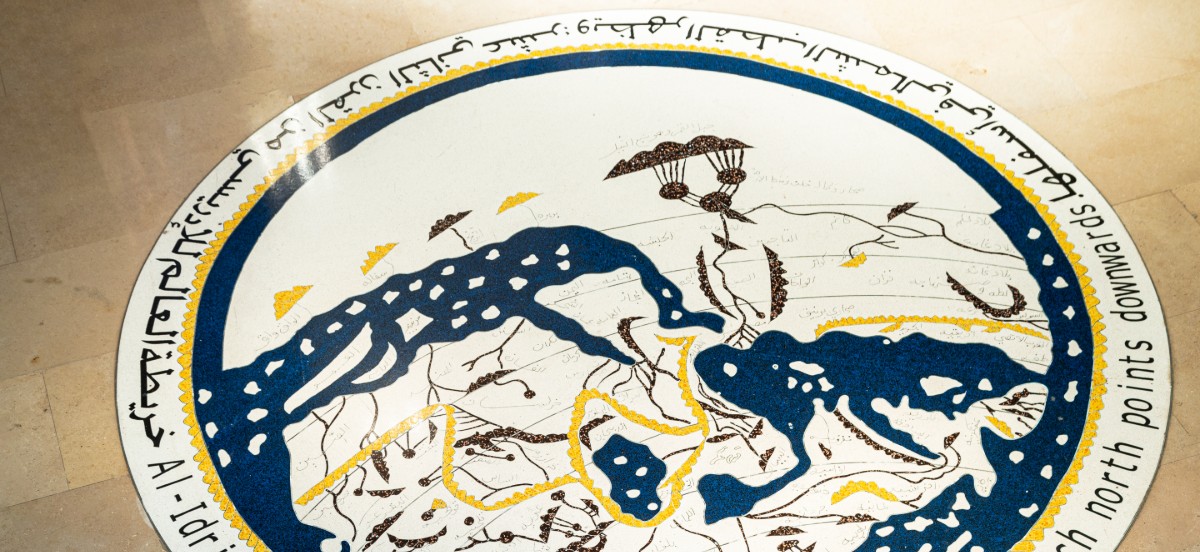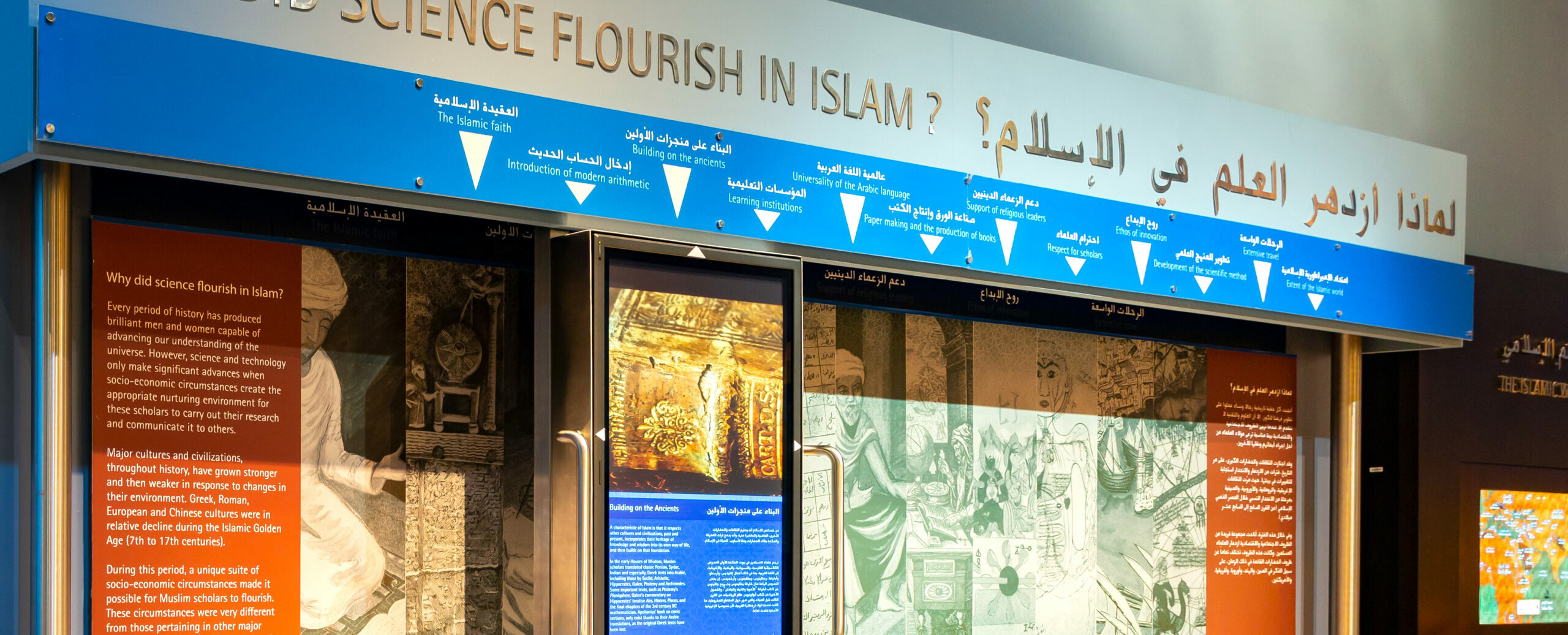The Introductory cluster introduces visitors to the theme, storyline and take-home message of the Museum. People are able to interact with a three-dimensional fly-through of the Museum. They then can view brief biographies of the most prominent Islamic scientists and inventors.
Also, visitors can learn the twelve reasons why Islamic science and technology flourished during the Golden Age of Islam from 650-1650. An interactive map can be viewed which shows the different ages of the Islamic world. Finally, an interactive Time Line provides a comprehensive overview of the development of Islamic science and technology.

The interactive multi-touch table Time Line (situated between the ‘Learning Institutions’ and ‘Astronomy and Navigation’ theaters) provides a comprehensive overview of the development of Islamic science and technology from 650 to 1650, with some recent highlights.
At the entrance door, visitors can view an interactive floor plan of the Museum in the form of a three-dimensional fly-through. This display explains the lay-out of the main clusters and the iconic exhibits in the Museum.

A replica of al-Idrisi’s famous 12th century world map, the most accurate at the time, is embedded in the floor at the entrance to the Museum.

King Abdullah Bin Abdulaziz Al Saud’s vision for the establishment of KAUST as a new House of Wisdom is portrayed on a large poster on the wall opposite the entrance to the Museum.
Flipbook combined with a large plasma screen that shows how the Islamic world developed from pre-Islamic times to the present.
The following periods in the development of the Islamic world are portrayed:

This large sliding plasma screen display is one of the most important exhibits in the Museum. The display describes the twelve main reasons why Islamic science and technology flourished during the period 650-1650. The screen displays different texts and illustrations to describe each point.
In this exhibit, the following 12 reasons explain why Islamic science has flourished:

A large back-projected screen shows images of the wide variety of contributions that Muslim scholars made to science and technology during the Golden Age of Islam (650-1650).

A display of open books tells the stories of 14 of the polymaths (scientists skilled in different fields) whose work is portrayed in the Museum. The 15th book describes Ibn al-Haitham’s contribution to the development of the scientific method.